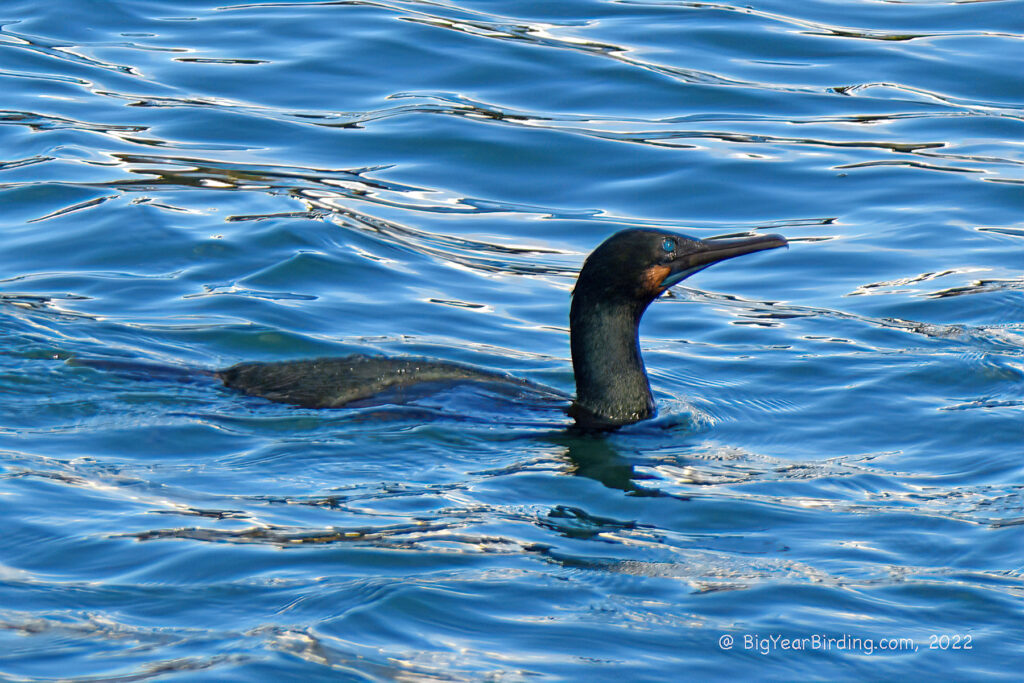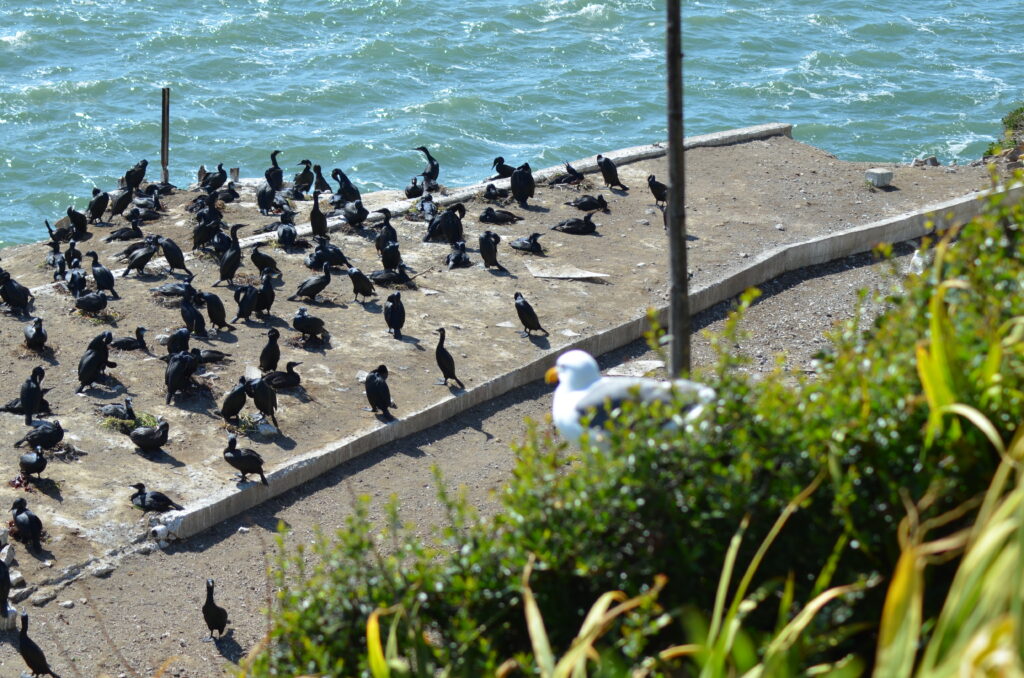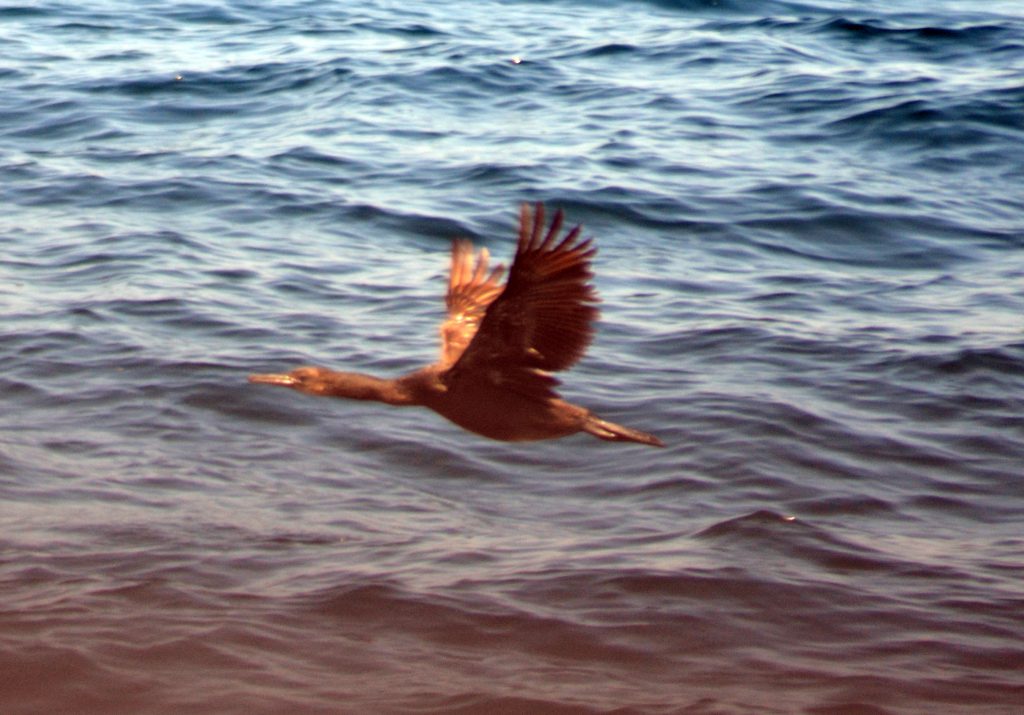
Brandt’s Cormorant (Phalacrocorax penicillatus) is a medium-sized marine bird found on the Pacific coast of North America. Adults measure around 26-32 inches in length with a wingspan of 44-49 inches, and they typically weigh between 2-4 pounds. Males are slightly larger than females, with a longer bill and more prominent forehead.
Brandt’s Cormorants can be easily identified by their distinctive black and white plumage. They have a glossy black body and wings, with white plumes on their head, neck, and back. During breeding season, they develop white flank patches and blue throat patches. Juveniles have brownish-black plumage with white underparts and a pale bill.

Brandt’s Cormorants are non-migratory, although they may move short distances to find better feeding grounds. They breed along rocky coasts and islands from Alaska to Baja California, Mexico. During the breeding season, they form colonies and build nests from seaweed, sticks, and other debris on rocky cliffs or in crevices. They typically lay 2-4 eggs and both parents take turns incubating them for around 28-35 days.
Brandt’s Cormorants are expert divers, capable of diving up to 180 feet deep in search of prey. They mainly feed on small fish, such as anchovies and herring, as well as squid and crustaceans. They can often be seen diving in groups, and are known to work together to corral schools of fish.

Although Brandt’s Cormorants are not currently threatened, they face several threats such as habitat loss, oil spills, and disturbance from human activities. Conservation efforts include protecting breeding colonies and limiting oil drilling in important foraging areas.
